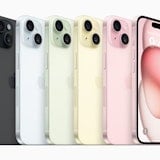 After years of rumor and speculation, Apple has taken its first step towards wearable technology by applying for an ‘iWatch’ trademark in Japan, according to Bloomberg.
After years of rumor and speculation, Apple has taken its first step towards wearable technology by applying for an ‘iWatch’ trademark in Japan, according to Bloomberg.
Nothing about the device is known as yet, but we may be able to get an idea of what Apple is cooking up based on existing smartwatches already in market.
Where we’re at
Of all the current smartwatches, the two most prominent are the Sony Smartwatch line and the Kickstarter-funded Pebble watch. Both devices are quite different in form but not function; one being a full smart-tech gadget from a massive international corporation and the other a nuts-and-bolts e-ink watch from a crowd-funded startup.
Despite their glaring hardware differences, both the Sony Smartwatches and Pebble watch are designed to work as an accessory for a smartphone and not as a device unto themselves. Bluetooth pairing allows users to access apps like Facebook, read SMS, control music playback and answer calls. The gadgets have also been known to tell the time on occasion.
Sony Smartwatches
 Sony recently announced the Smartwatch 2, which will be released in September for an unspecified price. The Smartwatch 2 follows in the footsteps of its almost unknown predecessor, adding IP57-rated water protection (‘splash-proofing’) and NFC pairing to the mix. The screen has been upgraded from a 1.3” 128x128 panel to 1.6” with a resolution of 220-x176.
Sony recently announced the Smartwatch 2, which will be released in September for an unspecified price. The Smartwatch 2 follows in the footsteps of its almost unknown predecessor, adding IP57-rated water protection (‘splash-proofing’) and NFC pairing to the mix. The screen has been upgraded from a 1.3” 128x128 panel to 1.6” with a resolution of 220-x176.
The SW2 is a full touchscreen device, unlike much of its competition which tend to be e-ink. E-ink is good in that it saves batteries, but it can definitely detract from the overall ‘smart’ experience. Sony claims that the SW2 will boast 3-4 days of battery life.
The Pebble watch
 The Pebble burst on to crowd-funding website Kickstarter with unprecedented hype, raising more than US$5 million over its original $100 000 goal. By the time it hit shelves that hype had died considerably, but that didn’t hurt the sales it made via the Kickstarter campaign and it remains a well-known gadget in tech circles.
The Pebble burst on to crowd-funding website Kickstarter with unprecedented hype, raising more than US$5 million over its original $100 000 goal. By the time it hit shelves that hype had died considerably, but that didn’t hurt the sales it made via the Kickstarter campaign and it remains a well-known gadget in tech circles.
The Pebble watch is a simplistic device with iOS and Android compatibility. It utilizes a black and white e-ink display to save on battery, allowing a full week of charge. Its interface is controlled by clicky buttons down each side of its shell which, compared to the SW2, is a little bulky but available in multiple colors.
Why Apple and Google can do it better
While some may find use in the current range of smartwatches, technology is reaching a point where a smartwatch can be much more. CPUs are faster and yet more efficient at energy consumption and with cooling rates, battery efficiency is increasing, NFC is proliferating, software ecosystems are becoming easier to sync with and more data is becoming readily available from online sources and the cloud. Apple and Google have picked the perfect time to enter the smartwatch race.
Apple
Apple’s iWatch is sure to boast some killer features, but there’s one reason it’ll probably see great sales right out of the gate; it’ll be made by Apple.
Apple has made a fortune by encoraging its users to embrace a full ecosystem of Apple gadgets from desktop PCs to laptops to iPads and iPhones. Its cloud-based services are fantastic if you own enough Apple products, Siri could compete easily with Google Now, and Apple brand satisfaction and loyalty are second to none. With this kind of fan-base Apple wouldn’t even need to do anything new with the iWatch; full access to the Apple ecosystem, app store and Apple brand name will be enough.
Google is more than capable of upping the game in this market that looks to be on the verge of quickly gaining momentum. With ample R&D already poured in to tiny screen interfaces via Android and Google Glass, Google is in a prime position to utilize its new tiny-screen based features.
Google Now’s card system has already proven useful on Glass and represents the perfect kind of functionality that one might expect from a smartwatch. Google Now can make and remind users of appointments based on time or location; can deliver easy-to-read search results for weather, game scores or train timetables; find local places of interest and it even features some decent voice detection that could be used to message or call contacts.
Another card in Google’s hand is its ownership of Motorola. Motorola already has experience with smartwatches with products like the MotoACTV. Together Google and Motorola could be a force to reckon with in the wearable tech space.
Image Credit: AppleInsider
Related Articles
Find Better Phones and Plans
Hundreds of cell phone plans unpacked. All the facts. No surprises.







































